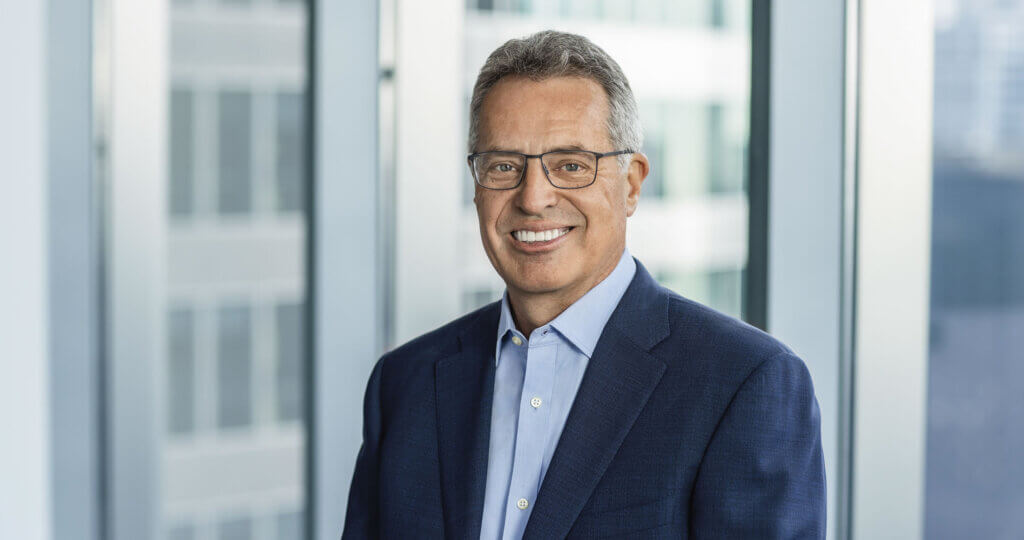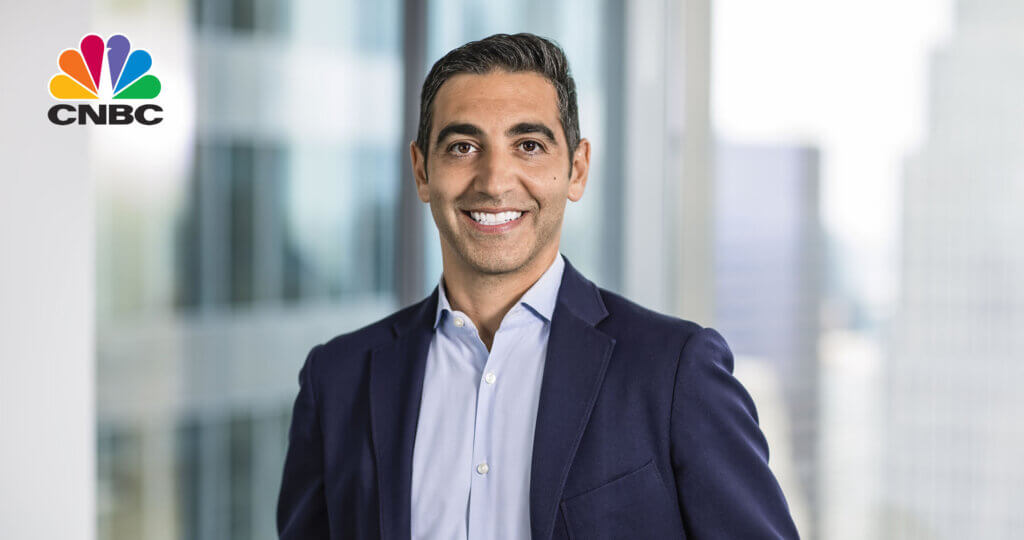At Oakmark, we are long-term investors. We attempt to identify growing businesses that are managed to benefit their shareholders. We will purchase stock in those businesses only when priced substantially below our estimate of intrinsic value. After purchase, we patiently wait for the gap between stock price and intrinsic value to close.
Banks
I wasn’t planning to write about banks, but because of recent events and our ownership, I felt a few comments were needed.
The banking system took center stage last month, and that’s never a good thing. The collapse of Silicon Valley Bank and Signature Bank heightened concern that depositors would flee small and mid-sized banks. That led investors to sell bank stocks. Given our exposure to banks, March wasn’t a good month. We think it is important to consider how different our banks are from those that failed.
The failed banks were mostly funded by uninsured deposits that tend to move more rapidly than insured deposits. Further, the banks that failed invested those short-duration deposits in long-duration bonds. Because of the rapid rise in interest rates, those bonds lost value. If they were marked to market, the book value of Silicon Valley Bank would have been negative. In contrast, banks we own are majority funded by insured deposits, which have less flight risk. Further, our banks didn’t make as big a bet on long-term bonds as the troubled banks did. After marking securities to market, the book value of our banks remained solidly positive. Unlike credit problems, which tend to get worse as each day passes, duration mismatches cure themselves given time. “Sticky” deposits provide an offset to longer duration assets and allow time to reverse mark-to-market losses. And a final difference is that insiders had been selling stock personally at the failed banks, whereas in March insiders were net buyers of the banks we own.
Banking is an industry with large economies of scale. A rule of thumb is when two similarly sized banks merge, non-interest expenses can be reduced by 20%. Because of that, banking has been a consolidating industry. Forty years ago, there were 14,469 banks in the U.S. The total number of banks is now only about 4,200. That decline occurred despite public policy that has favored smaller banks. (Note the number of banks is unrelated to how far away your nearest branch is—branches doubled over the past 40 years to more than 80,000.) Economies of scale mean the natural path for banks is to continue consolidating. Government policy may prevent that in good times, but the economic rationale is just too strong to stop the growth of big banks. If the regulatory playing field is leveled across all banks, as has been discussed due to recent failures, we would expect the decline in the number of banks to accelerate.
Competitively disadvantaged small banks struggle to match the breadth and depth of products and technology that large banks offer, so they can earn competitive returns for shareholders only by taking advantage of lower liquidity and capital requirements. The result is that smaller banks often have larger concentrations of risk with less capital and liquidity to protect depositors. When those risks go bad, as we saw last month, depositors move to safer big banks. The banks Oakmark owns are all over $150 billion in assets and rank in the 25 largest banks in the U. S. We expect them to continue benefitting from economies of scale. The stock market, however, hasn’t differentiated much in the banking stock decline. We believe the banks we own are not only cheap—most sell at single digit P/E ratios and below book value—but are also likely to grow faster than the industry. We increased our bank stock holdings in March.
Book Review and ChatGPT
“We’ve got the dog”
– autocorrected text that had been typed as “We’ve got the EMI” The Dealmaker by Guy Hands
The Dealmaker by Guy Hands is a captivating memoir that chronicles his journey from working at Goldman Sachs to becoming a successful private equity dealmaker. The book provides a detailed account of Hands’ experience in the industry, including his time at Nomura and his founding of Terra Firma. Throughout the book, Hands shares his insights and perspectives on various deals he has made, offering valuable lessons for aspiring entrepreneurs and investors. With a focus on both the business and personal aspects of his career, The Dealmaker is an engaging and inspiring read for anyone interested in the world of finance and business.
What I enjoyed most about the book was Hands’s thorough analysis of his mistakes. To make this more fun, I asked ChatGPT to explain why the largest acquisition made by Terra Firma, EMI, lost money:
“Terra Firma’s acquisition of EMI, one of the world’s leading music companies, in 2007, is widely considered one of the biggest failures in private equity history. There are several reasons why the deal failed. Firstly, the timing of the acquisition was unfortunate. It was done just before the 2008 financial crisis, which hit the music industry hard. The declining revenues from physical music sales, coupled with the rise of digital music, made it difficult for EMI to maintain profitability. Secondly, the deal was heavily financed by debt, with Terra Firma borrowing heavily to finance the acquisition. This put significant pressure on EMI to generate enough cash flow to service the debt, leading to a focus on short-term profitability over long-term growth. Thirdly, Terra Firma overpaid for EMI, with the deal valued at £4.2 billion, which was considered too high at the time. The high price tag left little room for error, and the declining music industry made it difficult for EMI to generate the expected returns. Finally, Terra Firma’s management style was criticized as being too aggressive and out of touch with the music industry. The firm made several unpopular decisions, such as suing music-sharing site, YouTube, which alienated EMI’s artists and executives. All these factors contributed to the failure of Terra Firma’s acquisition of EMI, leading to the eventual sale of EMI’s recorded music division to Universal Music Group in 2012.”
The only discrepancy I found in that summary was the deal price, which Hands said was £3.2 billion, not £4.2. On the surface, ChatGPT wrote a decent explanation despite the error. And just like the autocorrect error starting this section, despite similar fails (though probably not as prophetic as this one) from that early form of artificial intelligence (AI), few of us turn off that feature.
But a closer look shows that ChatGPT blames EMI’s failure on unanticipated external shocks:
- the financial crisis
- the resulting decline in music sales
- this decline in sales accelerated the trend to digital delivery
The reason I found Hands’s deep dive into mistakes so interesting was that he never focused on things that happened to them. Instead, he focused on internal process mistakes that allowed external shocks to be fatal. He cited the following problems with the EMI deal:
- feeling pressured to “win” after getting outbid on the last deal
- not knowing his team well enough—100 of 128 employees hired in the past two years
- the deal was so large it exceeded their maximum position size
- once diligence began, they ignored multiple profit warnings from EMI
- they ignored growing concerns with the onset of the Great Recession of 2008
- they shortcut normal due diligence to accommodate the seller’s desire for a quick sale
- they didn’t recognize how hard it was to renegotiate terms when buying a public company; previous purchases had been private
- they committed to the purchase price before setting the terms on their debt, giving the lender the upper hand
- they feared embarrassment if they walked away from the deal, even after suspecting it was a mistake
- Hands became CEO, breaking his rule that owners shouldn’t be managers because they lose objectivity
- and perhaps most important, they accepted a deal structure that left them unable to invest for the long term—EMI was ultimately worth $25 billion based on industry comparables, but the debt holders took ownership of EMI long before that value had surfaced
It reminded me of how we examine our losing investments. At Oakmark, we never feel pressured to find the next great deal. Our team has largely been together for more than a decade, we have always invested in public securities, and we never take over management. Though that protects us from some of the EMI mistakes, many of the others are familiar because over our long history we’ve also made those errors. When Oakmark loses money, we perform extensive post-mortems focused internally. Though it is always tempting to look externally—at what happened to us—the internal focus helps us improve our process and minimize the chance of making the same mistake again.
ChatGPT did a fine job of cataloging what happened to EMI, but completely missed the internal focus of what Terra Firma should have done differently. Despite the advancements of AI and its potential to make writers more productive, I think Oakmark analysts’ jobs are safe for now! But, to be fair to ChatGPT, it was very good at summarizing what an outsider could see. By the way, ChatGPT also wrote the 100-word summary of The Dealmaker that appeared at the start of this section, which I thought was difficult to improve on. ChatGPT is part owned by Microsoft, which owns the search engine Bing. After ChatGPT’s launch in November, investors worried that Bing could take market share from Google, causing Alphabet stock to fall.
Alphabet is our largest holding because we believe its Google search business deserves a premium multiple, and after adjusting for cash and other assets it currently sells at a discount. We believe a higher multiple is deserved because of Google’s dominant market share (which has still grown post-ChatGPT) in an above-average growth business. We believe investors incorrectly interpreted the launch of ChatGPT as showing that Google was behind on AI. However, we believe the many years of high R&D spending on AI at Alphabet makes it likely Alphabet is the leader and is just being more cautious. Alphabet has more to lose with 89% control of the search market compared to Microsoft’s 6%.
When reports surfaced of errors and other odd behavior from ChatGPT, fears that Google would lose share diminished. Then, last month Alphabet released a test version of its own AI chatbot, Bard, further calming investors. One of the advantages Bard has over ChatGPT is that it has access to current information, whereas ChatGPT cannot access information from the past year. So of course, when I tested Bard, I had to ask about the Chicago Cubs prospects this season:
“The Chicago Cubs have made significant changes to their roster in the offseason, including the signing of catcher Tucker Barnhart, shortstop Dansby Swanson, center fielder Cody Bellinger, and first baseman Eric Hosmer. These changes are likely to make the Cubs a more competitive team in 2023 and could help them reach the playoffs.
Barnhart is a solid defensive catcher who will provide stability behind the plate. Swanson is a young, talented shortstop who is expected to be a key part of the Cubs’ offense. Bellinger is a former All-Star outfielder who will bring power and speed to the Cubs’ lineup. Hosmer is a veteran first baseman who will provide leadership and experience to the Cubs’ clubhouse.
In addition to these changes, the Cubs are also expected to get a boost from the return of several key players from injury, including starting pitcher Marcus Stroman and outfielder Seiya Suzuki. Stroman is one of the best pitchers in baseball and Suzuki is a highly touted rookie who has the potential to be a star.
The Cubs are still a young team and there is some uncertainty surrounding their 2023 season. However, the changes they have made to their roster have made them a more competitive team and could help them reach the playoffs.”
Alphabet’s Bard, my new best friend!
The securities mentioned above comprise the following preliminary percentages of the Oakmark Fund’s total net assets as of 03/31/2023: Alphabet Cl A 3.7%, Bing 0%, Microsoft 0%, Nomura 0%, Signature Bank 0%, Silicon Valley Bank 0% and Terra Firma 0%. Portfolio holdings are subject to change without notice and are not intended as recommendations of individual stocks. Access the full list of holdings for the Oakmark Fund here.
The securities mentioned above comprise the following preliminary percentages of the Oakmark Select Fund’s total net assets as of 03/31/2023: Alphabet Cl A 10.2%, Bing 0%, Microsoft 0%, Nomura 0%, Signature Bank 0%, Silicon Valley Bank 0% and Terra Firma 0%. Portfolio holdings are subject to change without notice and are not intended as recommendations of individual stocks. Access the full list of holdings for the Oakmark Select Fund here.
The securities mentioned above comprise the following preliminary percentages of the Oakmark Global Select Fund’s total net assets as of 03/31/2023: Alphabet Cl A 11.0%, Bing 0%, Microsoft 0%, Nomura 0%, Signature Bank 0%, Silicon Valley Bank 0% and Terra Firma 0%. Portfolio holdings are subject to change without notice and are not intended as recommendations of individual stocks. Access the full list of holdings for the Oakmark Global Select Fund here.
The price to earnings ratio (“P/E”) compares a company’s current share price to its per-share earnings. It may also be known as the “price multiple” or “earnings multiple”, and gives a general indication of how expensive or cheap a stock is. Investors should not base investment decisions on any single attribute or characteristic data point.
The Oakmark Funds’ portfolios tend to be invested in a relatively small number of stocks. As a result, the appreciation or depreciation of any one security held by the Fund will have a greater impact on the Fund’s net asset value than it would if the Fund invested in a larger number of securities. Although that strategy has the potential to generate attractive returns over time, it also increases the Fund’s volatility.
Because the Oakmark Select Fund and Oakmark Global Select Fund are non-diversified, the performance of each holding will have a greater impact on the fund’s total return, and may make the fund’s returns more volatile than a more diversified fund.
The stocks of medium-sized companies tend to be more volatile than those of large companies and have underperformed the stocks of small and large companies during some periods.
Investing in foreign securities presents risks that in some ways may be greater than U.S. investments. Those risks include: currency fluctuation; different regulation, accounting standards, trading practices and levels of available information; generally higher transaction costs; and political risks.
The information, data, analyses, and opinions presented herein (including current investment themes, the portfolio managers’ research and investment process, and portfolio characteristics) are for informational purposes only and represent the investments and views of the portfolio managers and Harris Associates L.P. as of the date written and are subject to change and may change based on market and other conditions and without notice. This content is not a recommendation of or an offer to buy or sell a security and is not warranted to be correct, complete or accurate.
Certain comments herein are based on current expectations and are considered “forward-looking statements”. These forward looking statements reflect assumptions and analyses made by the portfolio managers and Harris Associates L.P. based on their experience and perception of historical trends, current conditions, expected future developments, and other factors they believe are relevant. Actual future results are subject to a number of investment and other risks and may prove to be different from expectations. Readers are cautioned not to place undue reliance on the forward-looking statements.
All information provided is as of 03/31/2023 unless otherwise specified.






